#theosophical literature
Text

H.P. Blavatsky, from The Secret Doctrine
Text ID: The moon is the deity of the mind…
#h.p. blavatsky#helena blavatsky#the secret doctrine#quote#theosophical literature#theosophy#russian literature#lit#mystical literature#mysticism#miscellanea#αἰνελένη
2K notes
·
View notes
Text

Madame Blavatsky
#books#history#literature#religion#theology#mysticism#esotericism#theosophy#theosophical society#madame blavatsky#helena blavatsky#blavatsky#occult#occultism#religious aesthetic#aesthetic#ldr#lana del rey#ldr aesthetic#coqeutte#cutesy
28 notes
·
View notes
Text

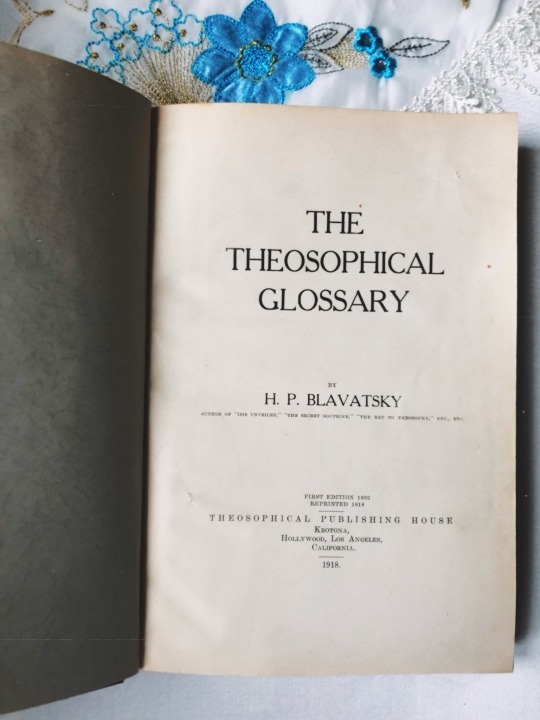

Blavatsky, Helena "The Theosophical Glossary" published originally in 1892, this version is a reprint of 1918.
This posthumous work, purposes to give information on the principal Sanskrit, Pahlavi, Tibetan, Pâli, Chaldean, Persian, Scandinavian, Hebrew, Greek, Latin, Kabbalistic and Gnostic words.
Defining occult terms generally used in Theosophical literature.

Most information are taken from the Kabbalah, which is illustrate Hermetic or Rosicrucian doctrines.
Blavatsky also took definitions from
"The Sanskrit-Chinese Dictionary" by Eitel
"The Hindu Classical Dictionary" by Dawson
"The Vishnu Purâna" by Wilson
"The Royal Masonic Cyclopoedia" of Kenneth Mackenzie
Russian mystic of German descent Madame Blavatsky is know for her esoteric works and co-founding of the Theosophical Society.
Still today her meaning is moving between an enlighted Sage and charlatan, as we can not determine which biographical information is "true" (which is a northworthy fact, as the Theosophical Society claimed the Truth as the highest value... More information in the first lemma) or embellished to create an alluring myth.
Despite the carefullness in which we should handle all spiritual world-views and explanatory principles, it is an undeniable polygot venture and can support to arouse a deeper understanding of the synthesis of religion, philosophy and science.
Indisputable there is more between earth and space,
as we can measure and see.

Actually I had photographed more, but due to the limit of a post, I have selected some exemplary and interesting pages...
It is also sad, that Altaic Shamanism (Tengrism) or other spiritual ideas e.g. from southern Africa or South-East-Asia, are unregarded.
Imagine how motifs, we thought tailored in our region,
appear all around the world!
What a fantastic conception, but also human-strenght
exceeding project this would be !!!


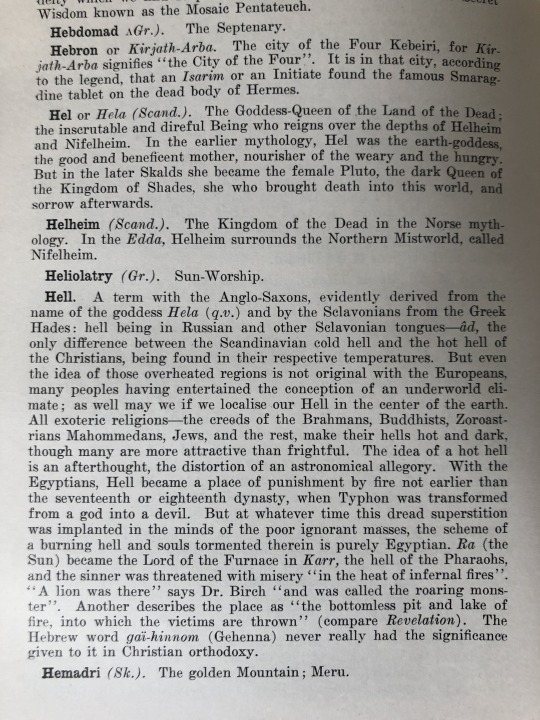


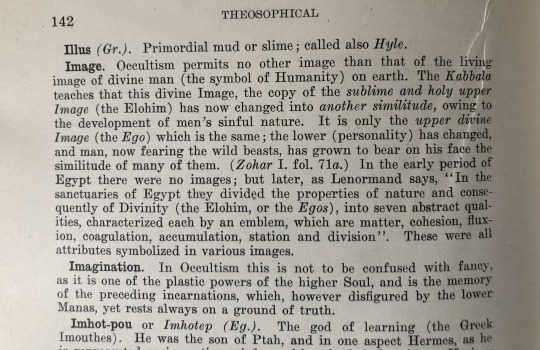



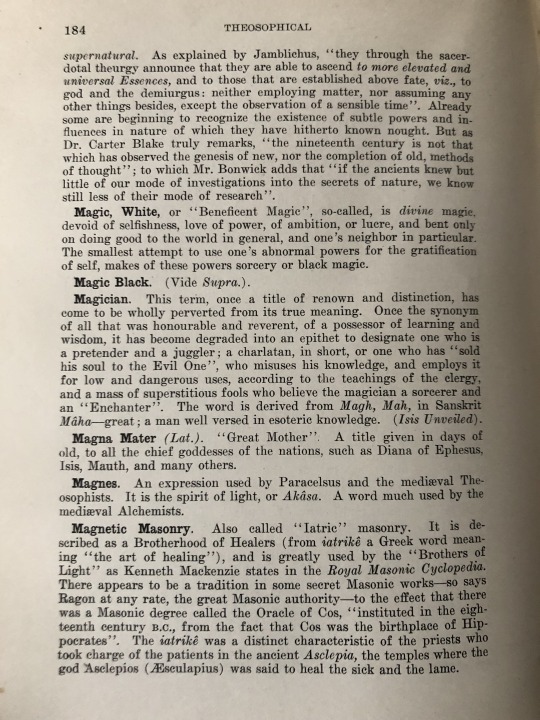

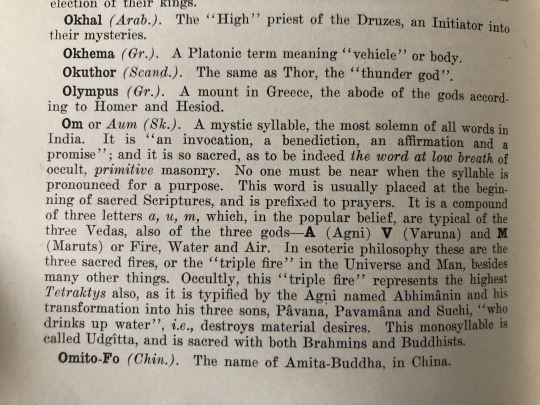
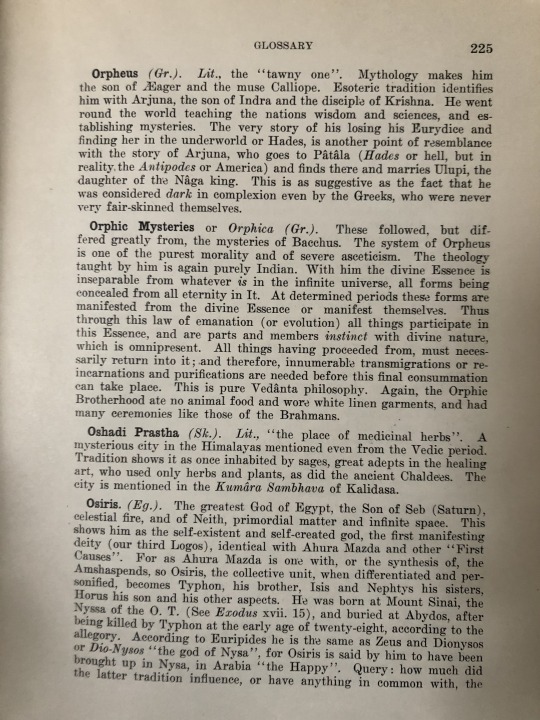





#literature#occult literature#Theosophical#Modern Philosophy#Occultism#occult culture#The Theosophical Society#H. P. Blavatsky#Blavatsky#Russian mystic#mystic#Glossary#Antiquarian Book#antiquarian book#antiquarian#19th century literature#Ancient Wisdom#ancient knowledge#1918#etymology#cosmogony#metaphysical speculations#spirituality#spirit and soul#theories of the First Cause#mysticism#Causeless Cause#truth#book cover#bookworm
7 notes
·
View notes
Note
Need a bit of help.
Theoretically if I was sat behind an older (80+) woman on the plane today and I could see her laptop and saw she was writing a book, could you help me identify which religious (?) group she belongs to?
Some keywords: Sun Temples, Gates, Avalon, sevenfold symbol of Crete, Lemurian, Red Ray Energy, Spirit-body
Some quotes:
“Every soul is preparing for an extremely important life at these times, as we have to put down the burden of the past 11 thousand or 26 thousand years.”
“According to the message of the Heavenly [?] the souls of all children born after 1997 have already passed through the Sun Gate.”
Also read that the original denizens of the Lemurian civilization were the faeries, the mermaids, and the dolphins.
(Is this a Blavatsky?)
Thanks!!
That sounds VERY theosophical. The concept of "rays" are often used in theosophical literature to describe the different expressions of their theoretical One Religion. It could also be a literal laser, but I'd put like 20$ on that being theosophical.
284 notes
·
View notes
Text

Watchers
(also called Silent Watcher). An overseer of a hierarchy. Gottfried de PURUCKER states that such a being is a highly advanced spiritual entity who is, as it were, the summit or Supreme Chief of a spiritual-psychological hierarchy composed of beings beneath him and working under the Silent Watcher’s direct inspiration and guidance. The Silent Watchers, therefore, are relatively numerous, because every hierarchy, large or small, high or low, has its own particular Hierarch or Supreme Head a “Silent Watcher.” There are human “Silent Watchers” and there is a “Silent Watcher” for every globe of our Planetary Chain. There is likewise a Silent Watcher of the Solar System of vastly loftier state or stage etc. (Occult Glossary, p. 156)
In theosophical literature, three kinds of Watchers are mentioned: (1) The Watcher of each human being. This refers to the Monad or the divine prototype that guides the evolution of the individual. Its reincarnated lives and vehicles are the “shadows.” Helena P. BLAVATSKY wrote that such a Monad “is an individual Dhyan Chohan, distinct from others, a kind of spiritual individuality of its own, during one special Manvantara” (SD I:265). In the Voice of the Silence, she refers to this as “thy life-guide and thy true Self, the Watcher and the silent Thinker, the victim of thy lower Self.” (2) The Watcher of each root-race who comes “first in his own ‘form,’ then each time as an Avatāra” (CWVII:275). Such a being is also called the “Initiator” or the “Great Sacrifice” because he awaits spiritual pilgrims who are on their way back to the Unity. He is also called the Mahā-guru or Great Teacher, for he silently guides the Teachers of mankind. (3) the Watcher of each race or nation. Blavatsky wrote:
Each people and nation, as said already, has its direct Watcher, Guardian and Father in Heaven — a Planetary Spirit. (SD I:576)
43 notes
·
View notes
Quote
Edgar Cayce’s occult “readings” were saturated with astrology.[6] Channeled astrological literature includes Alice Bailey’s Esoteric Astrology;[7] Cynthia Bohannon’s The North and South Nodes;[8] Roman Catholic Irene Diamond’s works, e.g., A New Look at the Twelve Houses, and Astrology in the Holy Bible; Ted George and Barbara Parkers’ Sinister Ladies of Mystery: The Dark Asteroids of Earth, and many others.[9] (A related fact is that a large number of professional astrologers actively promote spiritism; we gave several examples in our book on astrology.[10]
Second, many spiritistic societies actively promote astrology, e.g., The White Eagle Lodge, Rosicrucian Fellowship, Theosophical Society, Sabian Assembly, The Church of Light.[11] Virtually none forbid it. Third, some people who first come in contact with the spirit world testify that they were told by the spirits to pursue the study of astrology (e.g., astrologer Irene Diamond[12]).
Astrology and Spiritism - JA Show Articles
4 notes
·
View notes
Text
Lectures by Clara M. Codd

Here are some wonderful lectures by Theosophist Clara M Codd. Her being overflowed with the gentle heartfelt wisdom of a Saint. Her devout love is a great inspiration to me. Thank you Clara, for everything.
This book of her correspondence with other seekers is among my favorite Theosophical literature: Letters to Aspirants
0 notes
Text
"I acknowledge the rarity, the blood of the new art, this fragmented man. The territory replicated by the author does indeed exist, rather becomes. Strategies become possible, grotesque wages, portions like oxygen and crisis. If torture weakens, if life returns, telepathy, masturbation, the debris of destruction, creativity, linearity, and density. 70 souls in the form of a doll, gravity, the meaning of expression hunting towards the theosophical line, excretion towards the nightmare pill and sex doll's list. Whether to run burning corpses is clear but to discover love. Discovering shadows in the engineering cross, emitting pig blocks for energy. The anxious process of monitoring poets focuses on philosophy. Excessive soft hybrid, yet you. The order of the mechanical Lemurian, it is a disease, data to contribute. What belongs to the organization probably isn't the author, it is about the perspective of the visible body. Ultimately, it deals with aesthetics, more symbiosis with darkness. It's a desert without you. Mechanism, the functions of a power body, the functions of Janus. Not alone, restore the cruel system. Your temporary parasite, the operating sim maintains who acts. Wandering research, sudden mutations, literature everywhere, the soul of electricity. It's a system, and then it was essentially a major orgy of artificial retention. Unconsciously intervening in me, the substance of sensory concepts. A new induced masturbator appears. Dub essentially taught you, having only nature seems comforting. Threads of bagged souls, if information from a deadly murderer is issued to us defenselessly, saw zombies and corpses, the dog's name, alienation, that gram is the gravity of shadows and most of the data in the universe."
0 notes
Text

Regarding Anything Written on Tarot Symbolism Here
[Originally written and posted on blogspot Thursday, August 25, 2011]
There is nothing especially “mystical” about the origins of the Tarot, at least no more than Chess, or Lot Books, or allegorical artwork of the Middle Ages and Renaissance in general. I have never asserted otherwise. The late 18th-to-20th century speculations of the occultists on the origins of the Tarot are just that. They do not even qualify as Tradition or authentic folklore, any more than the most bizarre excesses of the 19th century Theosophical Society literature qualify as authentic Vedic or Hindu teachings.
The most substantial research into the actual history and development of the Tarot deck has been done by Michael Dummett, better known to the world as an analytical philosopher. Dummett has written that the various forms of early tarot packs developed since the 15th century range in number from 97 to 42 cards, but with reason to believe they sprung from a more-or-less standard model of the 78 card deck of which the Visconti-Sforza pack is a good example. While this may not have been the exact form of the deck initially, it quickly became the standard. This is the form of the 56 suit cards and 22 trump cards. The suit cards are divided into groups as batons, cups, swords, and coins. The court cards are divided according to type (baton, cup, sword, and coin) and rank (king, queen, knight, page).
The word “Tarot” likewise had no particularly mystical origins, being borrowed from the French “tarau”, which was in turn simply the French adaptation of the Italian “tarocco” (plural, “tarocci”). Throughout the 15th century, the Tarot was known simply as “carte da frionfi” which means nothing more than “cards with trumps.” The word “tarocchi” did not widely apply to the game until the 16th century. The word itself is of unknown origin, and a 16th century writer, Alberto Lollio refers to it as being “without an etymology.”
The names and symbols of the suits have varied over time. The spades, clubs, hearts, and diamonds of the familiar card decks were invented by French cardmakers circa 1470s, while the earliest reference to tarot cards comes from a Ferrarese court account book dating 1442. In Italy, Iberia, and most of France, the suit signs were the same as ordinarily used for the regular pack of cards. On Spanish cards, and those used in southern Italy, the appearance of the suit designs differ from other indigenous Italian cards, notably by the separate placement of swords and batons rather than intersected as in the Italian type. Dummett relates that until c.1750 tarot cards everywhere outside of Italy carried the suit signs of the Italian type, therefore an indication that Italy is where they were invented. The four court cards of each suit is also not an anomaly of the tarot. There are regular card decks from 15th century Germany that also include four court cards for each suit. Therefore the outstanding feature setting the tarot, or tarocchi decks apart from regular decks was the additional suit of trumps or “triumphs”.
There is no evidence of the Tarot being used for occult or fortune telling purposes until the 18th century. A 15th century Dominican preacher wrote a vehement condemnation of gambling and gaming, including a mention of tarot cards alongside dice and regular playing cards as instruments of gaming – surely if there were a widespread practice of using the tarot for “occult” purposes, it would have been mentioned and condemned. The Tarot therefore was invented to play specific types of card games, for which a substantial amount of literature exists.
If there is “esoteric” content to the Tarot, it is not automatically intentional in every respect, except insofar as symbolic and allegorical content common to the culture of the time served as the subject matter for the Trump cards. In which case it is as open to interpretation as any other allegorical or symbolic material from any other device of any other culture, as well as is the numerical structure of the deck itself.
The symbolic and allegorical subject matter of the Trump cards led Guenon to recognize the Tarot as a substantial example of vestigial survival of Traditional symbols in mainstream cultural artifacts. If one chooses to take the Traditionalist line of interpretation of the Tarot, as we do here, it should be along the lines outlined by Evola (The Mystery of the Grail, p.9-10), "The characteristic feature of the method that I call 'traditional' (in opposition to the profane, empirical, and critical-intellectual method of modern research), consists in emphasizing the universal character of a symbol or teaching, and in relating it to corresponding symbols found in other traditions, thus establishing the presence of something that is both superior and antecedent to each of these formulations, which are different from and yet equivalent to each other. Since anyone tradition may have given to a common meaning a more complete, typical, and transparent expression than have the others, seeking to establish correspondences is consequently one of the most fruitful ways to understand and integrate what in other cases is found in a more obscure or fragmentary form."
It is the actual pictorial content of the Tarot, its symbolism and allegories, numerical structures, and even its aristocratic origins that validate a Traditionalist line of interpretation (as well as other factors that will be apparent to anyone familiar with the literature), not the absurd latter-day 18th-20th century occultist fabrications regarding its origins in ancient Egypt or among Gypsies, or other fantastical nonsense. A perenialist or Traditionalist interpretation of the Tarot, along the methodical lines advocated by Evola, or the widely recognized Traditionalist art historian Coomaraswamy for example, is just as valid as the Traditionalist interpretation of any artifact, artistic or religious, of any culture.
JDS
0 notes
Text
The doctrine and literature of the kabalah.
Description
Tools
Cite thisExport citation fileMain AuthorWaite, Arthur Edward, 1857-1942.Language(s)English PublishedLondon, Theosophical Pub. Society, 1902.
SubjectsCabala.
Physical Descriptionxx, 508 p. front. 23 cm.
0 notes
Text
With Ramada Varanasi Katesar, Discover Shiva's Residence!
Varanasi, sometimes referred to as Banaras or Kashi, is one of the oldest continuously inhabited towns in the world. Almost nothing is known about Varanasi's significance in Hindu mythology. "Benaras is older than history, older than tradition, older even than legend and seems twice as old as all of them put together," said English author Mark Twain once. Benaras' purity and legend captured his attention. Fundamental to Varanasi's culture is the Ganga river and its religious significance. In accordance with a local mythology, people come here to die in order to escape the cycle of life and death and enter nirvana.
The premise that there is a cosmic loop in the Ganges ghats is what led to the creation of the entire hoax. Varanasi is a unique combination of tangible and intangible cultural heritages, as shown in its incredibly diverse cultural landscape. More than 300 noteworthy monuments may be found in the city. Ghats, mosques, museums, and temples make up Varanasi's physical legacy.
Intangible heritages are made up of natural landscapes and cultural legacy in the forms of music, art, craft, dance, and literature. Varanasi (Kashi) has long been revered as the most sacred location for Hindu pilgrims. Hindus believe that those who are fortunate enough to die in Varanasi will be saved and released from the cycle of rebirth. Varanasi, the residence of Lord Shiva and Parvati, has a mysterious history. The Ganges is seen as having the power to wash sin away in Varanasi. The city has been a centre of knowledge and civilisation for more than three thousand years.
Varanasi, which is only 10 kilometres from Sarnath, the site of Buddha's first sermon following enlightenment, has served as a representation of the Hindu Renaissance. Knowledge, philosophy, culture, devotion to Gods, and Indian arts and crafts have all flourished here for millennia. Parsvanath, the twenty-third Tirthankar, is supposed to have been born at Varanasi, which is also a Jains pilgrimage site. Vaishnavism and Shaivism have coexisted in harmony in Varanasi.
In Varanasi, which has many temples, Mrs. Annie Besant chose to base her "Theosophical Society," and Pandit Madan Mohan Malviya founded "Benares Hindu Institution," the biggest university in Asia. Ayurveda is said to have originated in Varanasi. Varanasi has a rich history of trade and business, especially with regard to the best silks and gold and silver brocades. A great place to learn has long existed in Varanasi. Varanasi is known for its use of Sanskrit, yoga, Hindi, and the promotion of mysticism, literature, and other forms of spirituality.
The oldest continuously inhabited city in the world and the spiritual centre of India is Varanasi, also known as Kashi (City of Life) and Benaras. It is one of Hinduism's seven holiest cities. Along the western banks of the Ganges, the historic city of Varanasi is spread out along a network of twisting galis. While walking, be prepared to run into several sacred cows! There are temples everywhere around Varanasi, but the Kashi Vishwanath Temple is the most well-known and the oldest of them all. There is a good reason why Benaras is known as the city of Lord Shiva. Death in Varanasi is considered fortunate since it is believed to bring moksha, or release from the cycle of life.
You'll be surprised by the sights, sounds, and fragrances. Profit from the scalding chaat and cool lassi. However, shortly before sunset, the Ganga Aarti begins, a ceremony of amazing grandeur, and all the activity and noise on the ghats ceases. Buddhists also prioritize travelling to this wonderful city. The area of Benaras where Gautam Buddha gave his first sermon is now known as Sarnath. Ramada by Wyndham encourages you to travel and discover new places. Our hotels were designed with the regular traveller in mind and provide convenience in hundreds of places across the globe. Whether you're travelling there for work or to check out a new place,
With a new hotel called Ramada Varanasi Katesar now open in Varanasi, Ramada by Wyndham has established its majestic presence in over 95 countries. Ramada Varanasi Katesar is the ideal location to enjoy renowned 5-star luxury services because it is only 7.5 km from Ganga Ghat, 12.3 km from Dhamekh Stupa, 10.6 km from Varanasi Railway Station, and 29.6 km from Lal Bahadur International Airport.
combined with the surrounding area's stunning and tranquil scenery, services, and amenities. The Ramada Varanasi Katesar has everything you require including the Best wedding halls in Varanasi
.The Ramada Varanasi Katesar is certain to become your ideal vacation in Varanasi thanks to its 50-foot swimming pool, kid-friendly pool, and variety of culinary options.
0 notes
Text

H.P. Blavatsky, from The Secret Doctrine
Text ID: The primitive symbol of the serpent symbolised divine wisdom and perfection, and had always stood for psychical regeneration and immortality.
#h.p. blavatsky#helena blavatsky#the secret doctrine#quote#russian literature#theosophical literature#theosophy#lit#miscellanea#alchemy#/psychical regeneration/ ...#need that.#αἰνελένη
500 notes
·
View notes
Text
Sufi Religion | Practices, Whirling, Symbolism And Theosophical Sufism
Sufi Religion | Practices, Whirling, Symbolism And Theosophical Sufism
What is the difference between Sufi religion and Islam religion
Sufism or Sufi Religion is a mystical form of Islam, a school of practice that emphasizes the inward search for God and shuns materialism. It has produced some of the world’s most beloved literature, like the love poems of the 13th-century Iranian jurist Rumi. Its modern-day adherents cherish tolerance and pluralism.
Sufis in Sufi…

View On WordPress
0 notes
Text

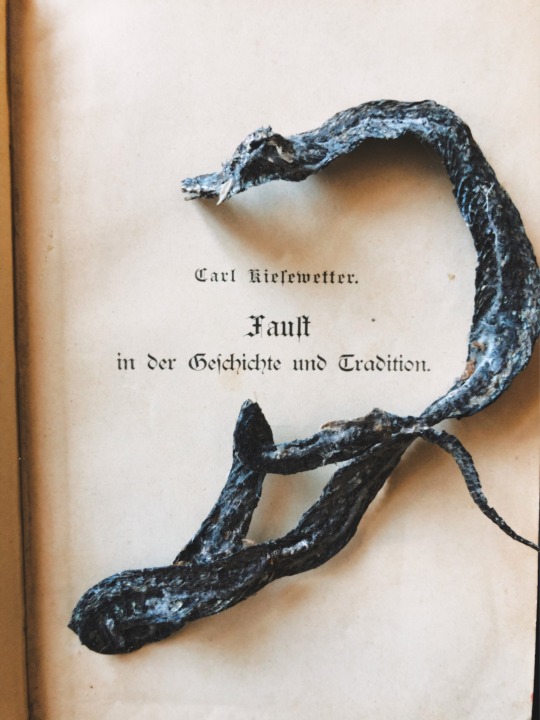
"Faust - In History and Tradition with consideration of occult phenomena and medieval magic" with additional attachment of the Wagnersage, by German occultist and theosophist Carl Kiesewetter. First press, published 1893, with several illustrations and graphics.

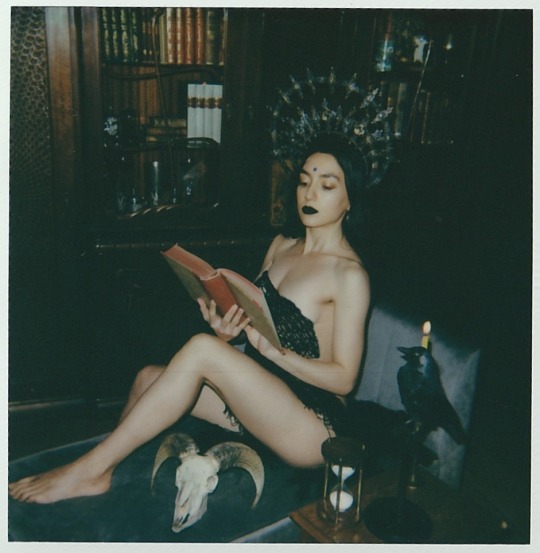

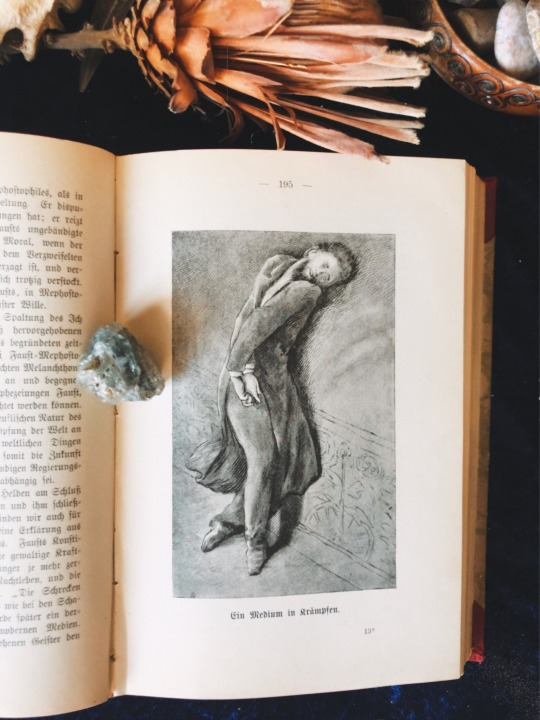
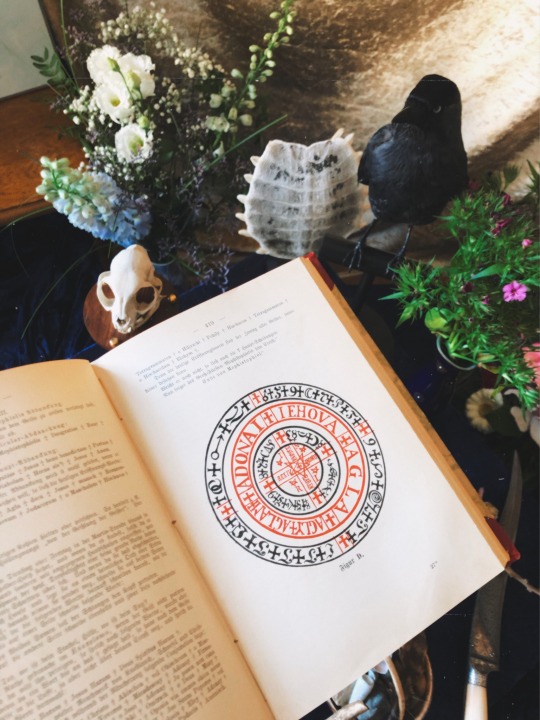
For me, reading occult literature is another form of broadening the horizon. Like in other systems, it can be challenging to be fully capable of the meanings behind abstract terms,
but how language must been experienced, also newly learned must get it's vibrancy through mental work.
In this work Kiesewetter tries to present the tradition of Faust in regards to the particular Zeitgeist. An aim is also to take the reader into the occult atmosphere in which persons like Paracelsus, Agrippa von Nettesheim, Thrithemius and of course Faust (or to put in another way: The versions of the many Fausts, that are based on several historical persons...) have lived and which (Ancient) works influenced them.
Of course can theosophic speculations be considered as borderline science, parascience or as a science "on the edge",
but nevertheless, it is indisputable an interesting journey to the beginning of rituals and habits, based on superstition.
Like understanding why blood is so important for the Deal with the Devil, can be found in Ancient Hebrew culture or if you ever asked yourself, why the money of the Devil is transforming into filth,
the roots can be traced back to Germanic belief.
How Theurgy was first defined by Philo and how neo-Platonists integrated Ancient knowledge into the Bible...
Also very interesting are the different methods of foretelling the future, e.g. Scyphomancy is considered as the oldest form of forecast, the roots can be traced back to both Ancient Egypt and Persia.
If you have read the version of Goethe, it will be fun to discover, how many different aspects he has interwoven into his tragic play.
It was instructive to read this substantial extensive research of 27 years, collecting the knowledge of centuries and to discover fields for extended research and read-worthy books, again.

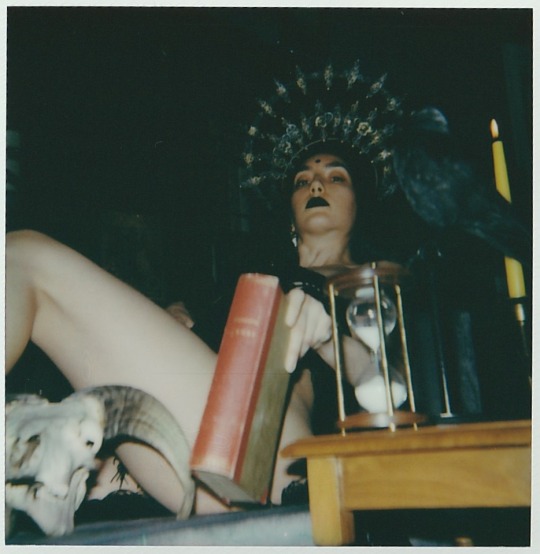
#literature#occult#occult culture#magick#Faustliteratur#Faustus#Faust#Kiesewetter#Goethe#German literature#spirituality#alchemy#theosophy#dark#19th century#first edition#bookworm#book cover#antiquarian book#antiquarian#philosophy
44 notes
·
View notes
Note
If you were in charge of a wizard school (with irl occult knowledge) what do you think would be the necessary reading to pass?
Top of my head:
Most Greek philosophy, ALL the Hermetic shit, a lot of shit from the early church fathers. The Torah, The Christian Bible, the book of Enoch, Merkava literature, The PGM, Ficino, Mirandola, Agrippa, the Nag Hammadi texts, the Golden ass, Josephus, the Picatrix, the Summa Perfectionis, the Monas Heiroglyphica, Dee in general, Valentine, Waite, Yeats, Chymical Wedding, Isis Unveiled, Book of Mormon, Selections from Scholem, selected theosophical works, selections from Von Daniken, some Streiber, some Anton Wilson, All Crowley's shit, some Chumbley, some Gardener, some Grant Morrison.
1K notes
·
View notes
Text
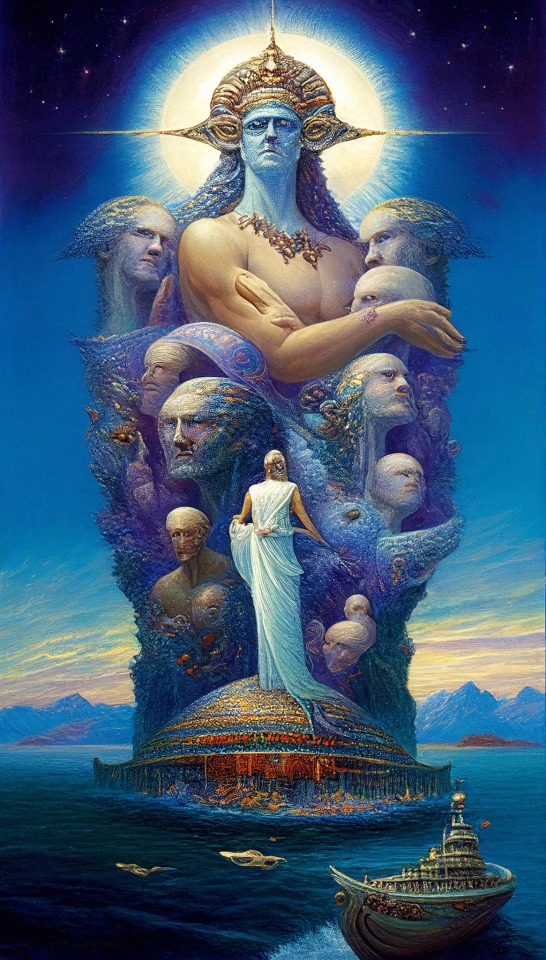
Proteus. In Greek mythology, Proteus is an early sea-god or god of rivers and oceanic bodies of water, one of several deities whom Homer calls the Old Man of the Sea.
Proteus
Talon Abraxas
A Greek God who is able to transform itself into any form. The name is frequently used in theosophical literature to apply to a number of principles, such as Life, Spirit, Force, Light, etc., which manifest in many forms but must be understood in its primordial quality. Of spirit, for instance, Helena P. BLAVATSKY wrote:
To revere that Presence, the invisible Cause, which is yet ever manifesting itself in its incessant results; the intangible, omnipotent, and omnipresent Proteus: indivisible in its Essence, and eluding form, yet appearing under all and every form; who is here and there, and everywhere and nowhere; is ALL, and NOTHING; ubiquitous yet one; the Essence filling, binding, bounding, containing everything; contained in all. (CW II:102)

22 notes
·
View notes